Chapel
Introduction
Text-to-speech Audio
Images
Exterior of current chapel, built 1933
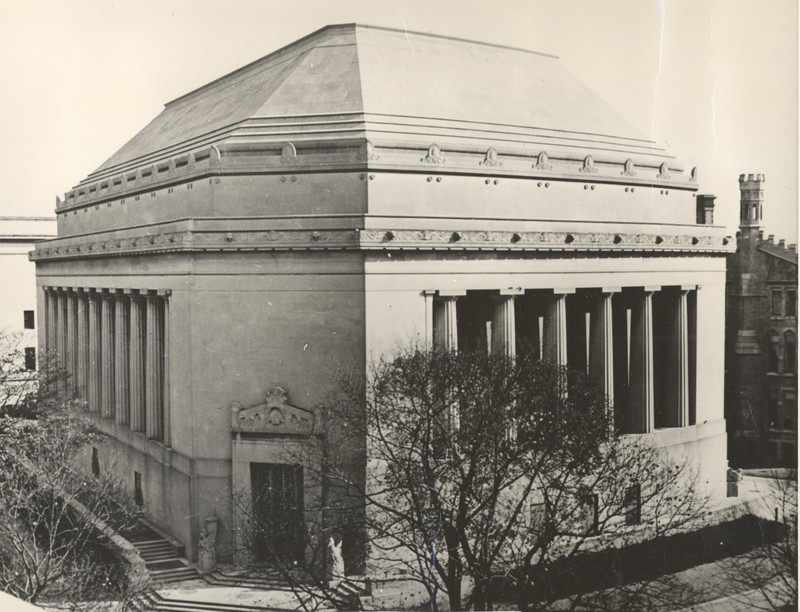
Current chapel interior
.jpg)
Current chapel interior, view from speaker's podium
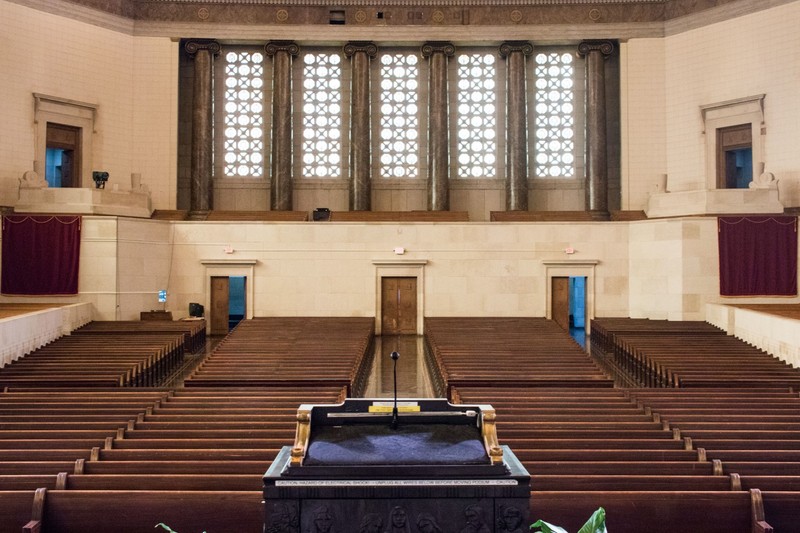
Exterior of 1878 chapel
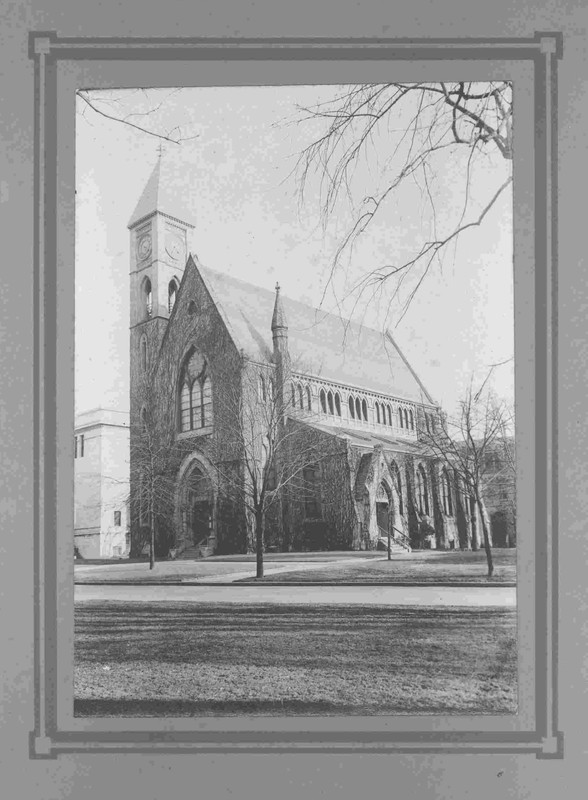
Interior of 1878 gothic chapel
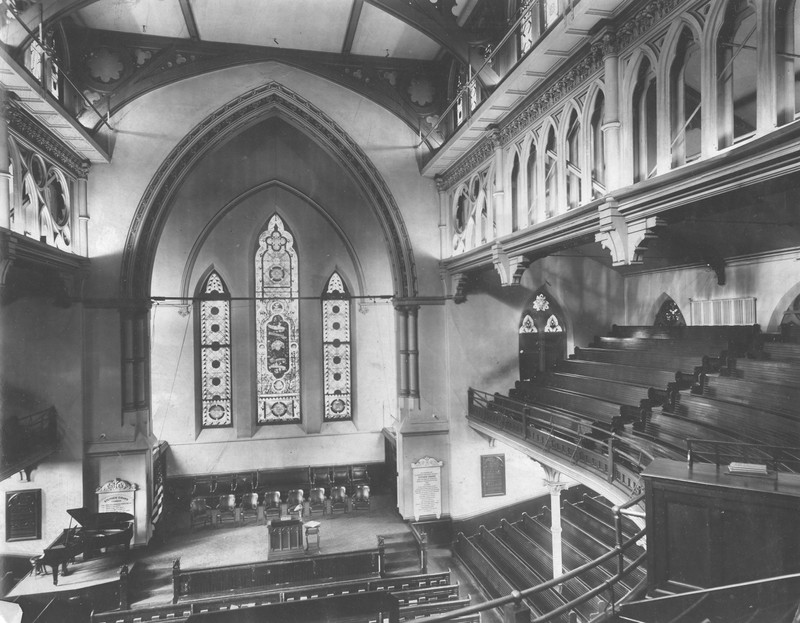
One of two main entrances (south entrance), current chapel.
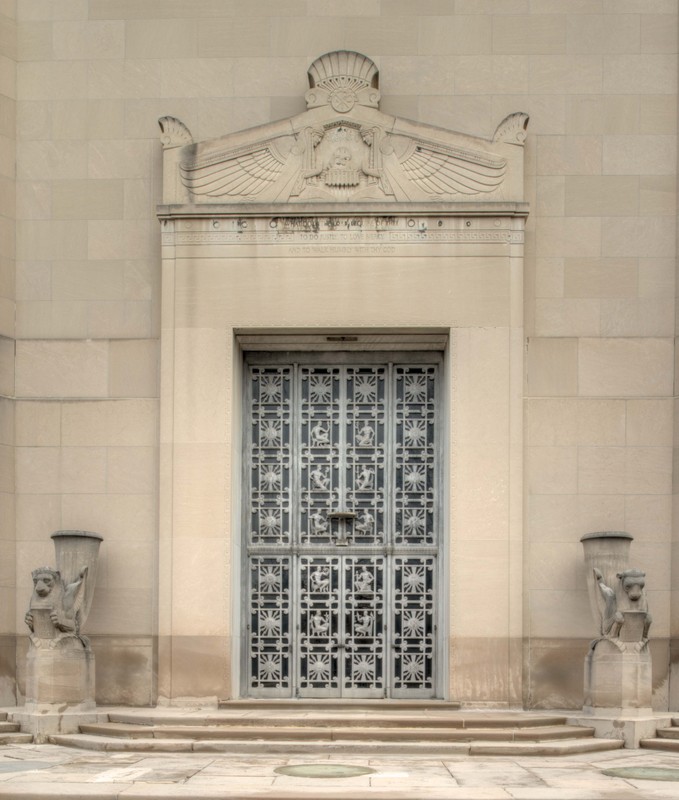
Figure of John the Evangelist, north main entrance of current chapel
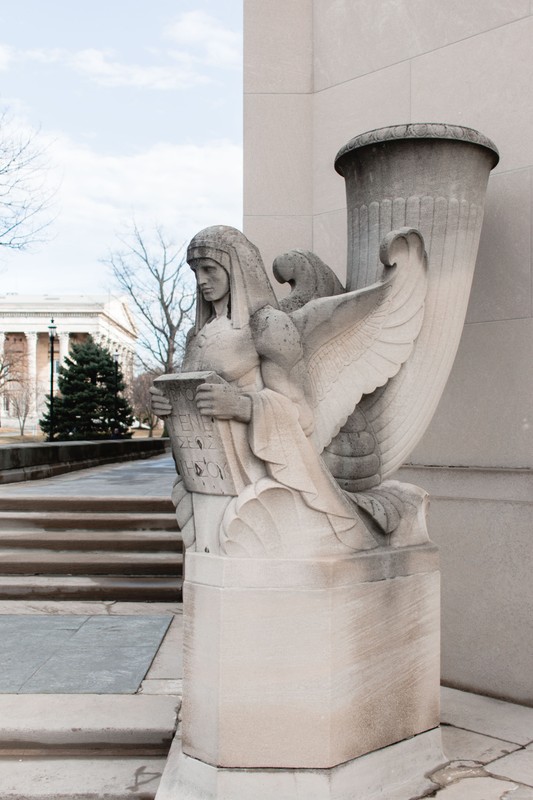
Backstory and Context
Text-to-speech Audio
Girard College is and always has been a non-denominational school. In an attempt to prevent “the excitement which clashing doctrines and sectarian controversy are so apt to produce,” Stephen Girard’s will actually barred clergy from the campus. However, Girard’s will also called on the (lay) staff to teach students:
“the purest principles of morality, so that, on their entrance into active life, they may from inclination and habit, evince benevolence towards their fellow creatures, and a love of truth, sobriety and industry, adopting at the same time such religious tenets as their matured reason may enable them to prefer.”
Therefore, non-denominational Christian services led by laymen were held at Girard from its founding. For the first 30 years of the school’s existence, the southwest room of Founder’s Hall served as the chapel. In 1878, it was replaced by a freestanding gothic chapel on the site of the current chapel building.
By the late 1920s, school enrollment had grown to nearly 1700 students, necessitating a new, larger, chapel. It was to reuse the same plot of land, which at the time was surrounded by other campus buildings, since removed. The new chapel was the result of an architectural competition, like Founder’s Hall a century earlier. Sixty applicants were narrowed down into ten finalists, and ultimately the award was given to Philadelphia’s Thomas, Martin & Kirkpatrick.
The Chapel was designed with function in mind. It was built of Indiana limestone and its unusual wedge shape maximized the use of the available land and enhanced the acoustics of the enormous chapel, which could seat 2400 people. The cost savings of limestone over marble allowed for the construction of the new library building without a separate appropriation. Thomas & Martin designed the building with many exterior doors to facilitate moving large numbers of students into and out of the building and an ambulatory surrounds the main auditorium space, which allows the entry and circulation of people through the building without disturbing events in progress. The ambulatory also means that there are no ground-floor windows from the outside into the auditorium, which minimizes distractions; upper level windows have amber glass.
The style of the Chapel is representative of the 1930s, and includes ornate light fixtures, a gold ceiling, marble floors, and a Greek key pattern that appears throughout the structure. The high mansard roof allows provides space for a massive 6,829-pipe organ installed above the assembly space. Sound from the organ filters into the main hall through grillwork in the ceiling. Opus 872 was the last organ personally designed and finished by renowned organ builder Ernest Skinner.
Sources
Girard College, Annual Reports of Girard College.
Herrick, Cheesman A. History of Girard College. Philadelphia, PA. Girard College, 1927.
Laurent, Elizabeth. "Girard College Chapel & Organ." Girard College leaflet..
Photograph of 1933 chapel. Girard College Historical Collections
Photograph of current chapel interior. Girard College.
Photograph of current chapel interior, view from speaker's podium. Girard College.
Photograph of 1878 chapel. Girard College Historical Collections
Photograph of interior of 1878 chapel. Girard College Historical Collections
Photograph of doorway of current chapel. Girard College
Photograph of figure of John the Evangelist. Girard College.
